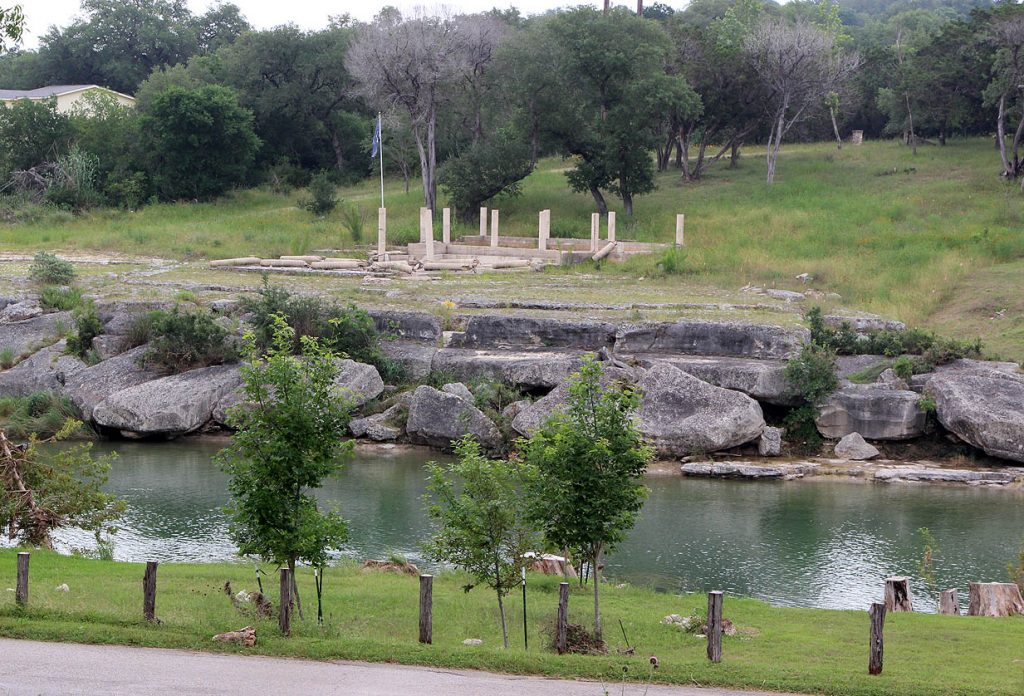
The lady’s phone went dead at 11:11 pm as the house hit the RR 12 bridge.
Memorial Day Weekend 2015, a massive flood devastated Wimberley and changed the lived of many of it’s inhabitants forever.
In remembrance of this epic water event and the people who came together to help each other rebuild – We would like to start by sharing this moving video made by Kara Lael Buse which artistically captures the days before and then after the flood.
Transformative Waters from Wyld Roots on Vimeo.
It is so important that we learn from huge events such as the 2015 flood and plan our cities in a way that is respectful our climate: Droughts with intermittent Flooding. A flood like this will happen again. Will we be ready?
Next we give you A little local flood plain history and a warning from an email sent out 4 years ago from the steering committee of the Citizens Alliance for Responsible Development, (CARD).
WIMBERLEY AND HAYS COUNTY A Tragic Flood; A Likely Repeat
The flooding that occurred along the Blanco River on May 23rd and May 24th, 2015 was a tragedy of enormous proportions. Lives were lost, homes and property were destroyed, huge trees were snapped and uprooted, and the beauty that was the Blanco River became a jumble of debris.
Old timers said they had never seen a Blanco River flood like this before, and there have been many historic floods. The water level at the RR 12 bridge river gauge crested at 44.9 feet. Officially, the Federal Emergency Management Agency (FEMA) considers the Memorial Day flood to be a “120- to 150-year event” or one that has a .67% chance (150 year flood) of reoccurrence in any year.
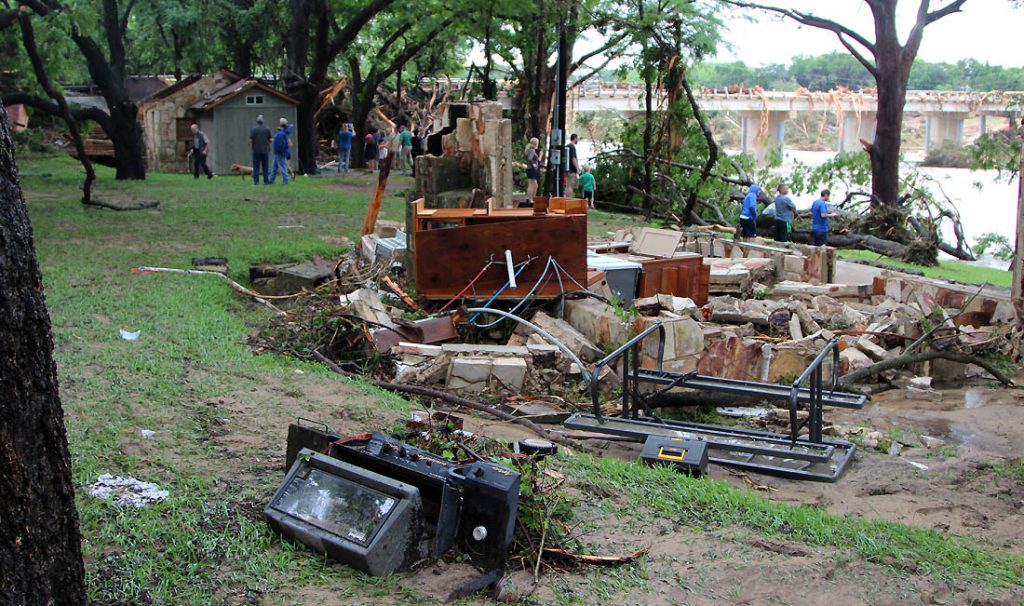
Who could have believed that was possible?
Well, as it turned out, a lot of credible people.
BACKGROUND
As a much-discussed story in the May issue of Texas Monthly pointed out, in 1989 a U.S. Army Corps of Engineers study predicted that a “100 year flood” on the Blanco River would reach an elevation of 40 feet at the RR 12 Bridge. This study was based on an exhaustive five year analysis of the Blanco River’s steep terrain coupled with knowledge of the area’s rainfall patterns. The study predicted high velocity flood flows during a 100 year flood.
FEMA accepted the 1989 Corps of Engineers report and prepared a revised 100 year flood plain map that was approved by the Hays County Commissioners Court in 1993. The Court expressed great concern for the impact on property values and developable land, but accepted the report in order to stay in compliance with the FEMA Flood Insurance Program.
BACKLASH
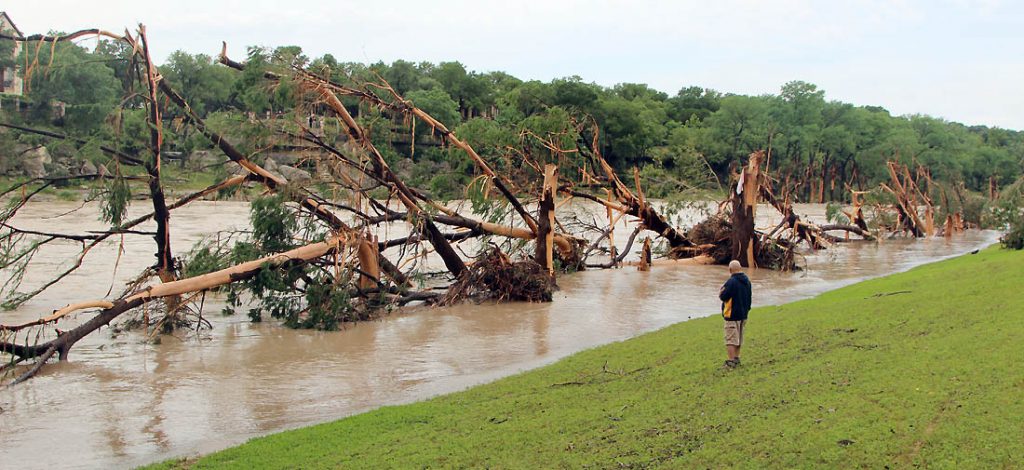
But some local residents were alarmed that flood levels were predicted to be that high – not because they feared the flood, but because they feared the report. They formed the Guardians of the Blanco River Watershed to oppose implementation of the new 100 year flood map. Ostriches may not really hide their head in the sand, but people do.
The Hays County Commissioners Court, with assistance from US Senator Lloyd Bentsen, took FEMA to court, arguing that the predicted flood risks were wildly overblown.
The court case went to arbitration and after negotiation the elevations of the 100 year flood were reduced by up to eight feet. Hays County adopted the new lower level flood map in 1996. That lower map – the one that told people what they wanted to hear – is still the official 100 year flood map today.
Tragically, we now understand that the original FEMA/Corps of Engineers 100 year floodplain elevations were correct. In fact, more development upstream and better input data have caused the current computer models that predict flood elevations to foresee an even higher 100 year flood. A new “Advisory 100 year Flood Plain Map” that has been developed by FEMA shows the flood elevation on the Blanco River at RR 12 to be 42 feet – two feet higher than the 1989/1993 FEMA map, and 10 feet higher than the map Hays County finally accepted.
In spite of this knowledge, Wimberley and Hays County residents are being allowed to rebuild along the Blanco River well below the “Advisory 100 Year Flood Plain Map” elevations. Some homes that were damaged more than 50% in total value and are below the existing (but now outdated) 1996 100 year flood elevations cannot rebuild, as required by the FEMA Flood Insurance Program. Home owners below the Advisory 100 Year Flood Plain Map elevations will encounter higher FEMA Flood Insurance premiums because of their high risk of flooding and damage. Homes that are at least one foot above the 1996 flood plain map elevations (which is far below the actual Memorial Day Flood) can rebuild.
A 100 year flood will return to the Blanco River with flood levels as currently predicted by the “Advisory 100 Year Flood Plan Map” and with the high velocities that can snap huge trees and destroy homes and lives in the flood’s path. The only question is when? We know there is a one percent chance of it reoccurring in any year- not a comforting thought.
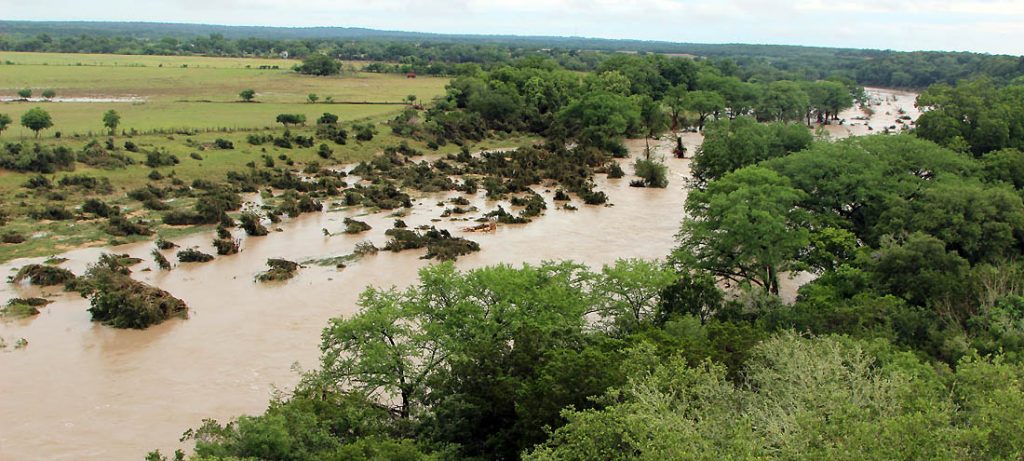
WHAT’S NEXT?
Adopting another deceitful flood plain map may be a slick way to keep local property values higher, and comfort those who don’t know it’s not true, but it’s a dirty trick to play on current and future home owners who think their property and lives are safely above the next big flood.
Some county officials and others have talked of building flood control reservoirs along the Blanco River to mitigate flood flows. There are no engineering studies to support such an approach. During the Memorial Day flood enough water passed through Wimberley to fill half the capacity of Canyon Lake. A massive new dam of even one-half these proportions along the Blanco River is impractical and should not be considered. The Hays County Commissioners Court should not delay adopting the new “Advisory 100 Year Flood Plain Maps”. Delay would be a dangerous disservice to the people of Hays County, now and in the future.
Wimberley and Hays County should work closely with FEMA to bring an accurate new flood plain map to the table, advising citizens of the risk of building within the flood plain, and adopting realistic new flood plain elevation maps. Without such action, citizens will be at risk and public officials could – and should – be held accountable.
– CARD Steering Committee
——————————————————————————————————————–
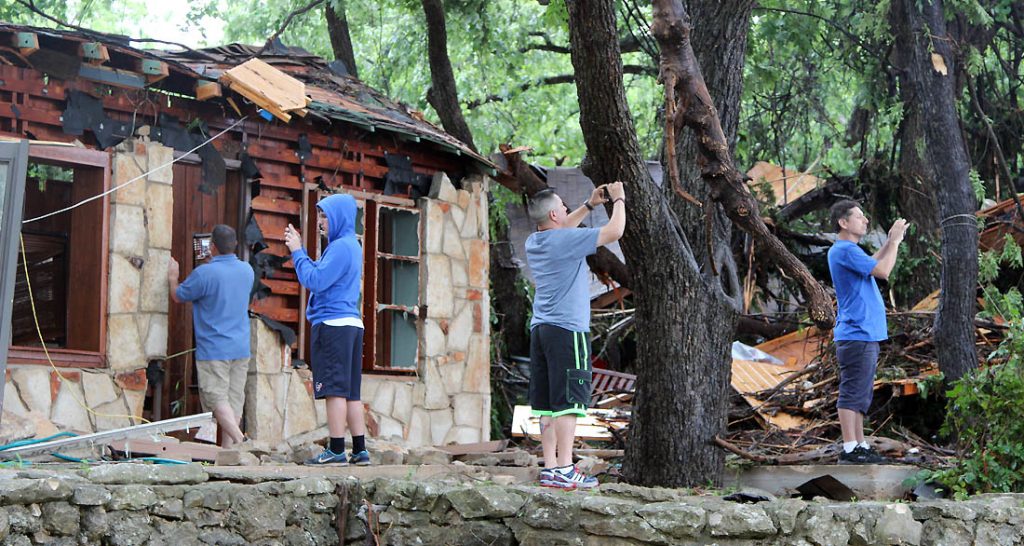
WHERE ARE WE NOW?
The 2015 flood brought many of our flood planning inaccuracies to light and finally steps are being made to right them.
In January of 2018 FEMA released new flood plain maps for the below counties and gave residents and opportunity to comment and appeal:
If you have questions about the maps you can contact a FEMA map specialist by telephone at 1-877-336-2627 or by email at FEMAMapSpecialist@riskmapcds.com. You can also use a live chat service here.